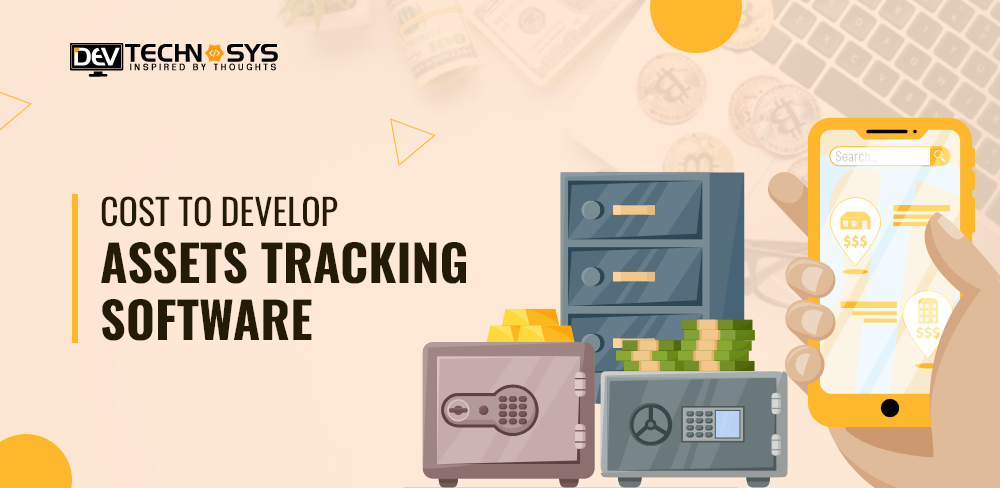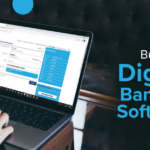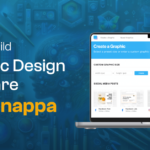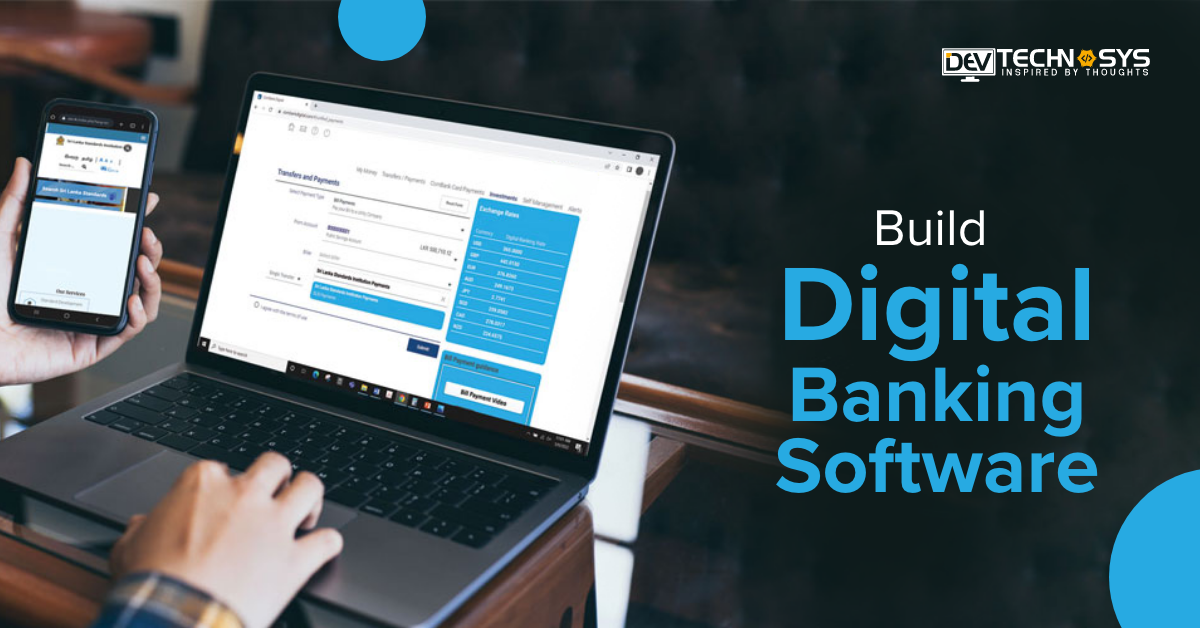“The more you engage with customers, the clearer things become and the easier it is to determine what you should be doing.” – John Russell.
In the dynamic landscape of business operations, the need for efficient asset management has never been more critical. Enter asset tracking software—an indispensable solution revolutionizing the way organizations monitor and optimize their resources. But as businesses embark on the journey to implement such cutting-edge technology, a common question looms large: How much does assets tracking software development cost?
Unraveling the intricacies of assets tracking software development cost requires a comprehensive exploration of key factors. From the intricacies of customization to the depth of features.
In this blog post, we delve into the realms of assets tracking software development cost, benefits, and shedding light on the factors that influence the bottom line.
Table of Contents
What is Assets Tracking Software?
Assets tracking software is a digital solution that monitors and manages an organization’s physical assets throughout their lifecycle. It utilizes technologies like barcodes, RFID, or GPS to provide real-time visibility into asset location, usage, and maintenance.
![]()
This software helps streamline inventory management, prevent loss or theft, optimize resource allocation, and ensure compliance with regulations. By automating tracking processes, it enhances efficiency, reduces manual errors, and ultimately maximizes the overall productivity of asset management system software development.
How Does Assets Tracking Software Work?
Asset tracking software operates by allowing users to input and organize information about their physical assets into a centralized digital system. Each asset is typically assigned a unique identifier, such as a barcode or RFID tag, which is scanned and recorded during various lifecycle stages.
![]()
Users can access the software to update details like location, maintenance history, and usage. Automation plays a key role, as sensors or GPS devices can provide real-time data, enabling users to monitor assets remotely.
The software often integrates with other Asset system management software like inventory management or maintenance schedules, facilitating seamless workflows. Advanced analytics may be employed to predict maintenance needs or optimize asset utilization.
Assets Tracking Software Development Cost
Creating custom asset tracking software involves several factors that contribute to its overall cost. Firstly, the complexity of the features you want plays a crucial role. Basic systems for small businesses might cost around $10,000 to $15,000, while more advanced solutions for larger enterprises can range to $25,000 or more. Below is the table to know the cost to develop software on the level of complexity:
Level of Complexity |
Cost Estimation |
Time Duration |
| Simple Software | $10000-$14000 | 2-3 months |
| Medium Software | $15000-$20000 | 4-6 months |
| Complex Software | $25000 | 9 months |
The choice of technology also impacts costs. Developing for a single platform is generally more affordable than creating a cross-platform solution. Additionally, the level of customization and integration with existing systems affects the budget.
Development time is a significant factor too. A simple asset tracking tool may take 2-4 months, while a comprehensive, tailored Asset management solution could extend to a year or more.
Finally, ongoing maintenance and updates should be considered. These costs ensure that your software remains compatible with evolving technologies and security standards. So, if you want to know the exact assets tracking software development cost, then you must consult with a custom software development company.
Factors Affecting the Cost to Make Assets Tracking Software
Developing asset tracking software involves various factors that can significantly impact the overall asset tracking software cost of the project. Let’s delve into some key aspects that influence the assets tracking software development cost.
1. Features and Complexity:
The complexity and range of features in the software significantly impact the cost. Basic tracking systems may focus on location and status updates, while advanced solutions include features like predictive maintenance, integration with other systems, and customizable reporting. You must integrate this feature in your software with the help of the best software development company.
2. Technology Stack:
The choice of technology stack, including programming languages, databases, and frameworks, plays a role in development costs. Using cutting-edge technologies might result in higher initial expenses but could offer long-term benefits in terms of scalability and performance.
3. User Interface (UI) and User Experience (UX):
A user-friendly interface and seamless user experience are crucial for the software’s success. Designing an intuitive UI and UX requires skilled professionals and thorough testing, impacting development costs. Well-designed interfaces enhance user adoption and satisfaction.
4. Integration with Existing Systems:
If the asset tracking software needs to integrate with other existing systems like ERP, CRM, or third-party APIs, it can affect the development cost. Compatibility and seamless data exchange between systems often require additional development effort.
5. Customization Requirements:
Organizations often have unique needs and workflows. The level of customization required for the asset tracking software influences costs. Tailoring the solution to specific business processes or industry standards may demand more time and resources.
6. Mobile Compatibility:
Mobile compatibility is crucial for real-time tracking. Developing mobile applications for iOS, Android, or cross-platform solutions adds to the overall cost. Mobile integration allows users to access and update asset information on the go, enhancing flexibility.
7. Security Measures:
Security is paramount, especially when dealing with sensitive asset data. Implementing robust security measures, such as encryption, access controls, and authentication protocols, can increase development costs but is essential for protecting valuable information.
Benefits of Assets Tracking Software Development
As per the chatbot software development company, below are the benefits of Asset tracking software development. So let’s have a look at them:
1. Enhanced Visibility:
Imagine having a magic lens that reveals the exact location and status of all your company assets at any given moment. That’s what assets tracking software does. It provides a bird’s-eye view of your assets, preventing the frustration of searching high and low for that one crucial item.
2. Time-Saving Efficiency:
No more manual record-keeping or tedious spreadsheets. Assets tracking software automates the tracking process, freeing up valuable time for your software product development company. It’s like having a personal assistant that takes care of the nitty-gritty details, allowing your team to focus on more important tasks.
![]()
3. Loss Prevention:
Ever misplaced a tool or a piece of equipment? With assets tracking software, you can kiss those worries goodbye. It acts as a guardian, alerting you if an asset goes astray. This not only saves money by preventing losses but also avoids the headache of having to replace or repurchase items. Cloud computing software development keeps data quality in control and helps with disaster recovery and data loss.
4. Optimal Resource Allocation:
Knowing exactly where your assets are enables you to allocate resources more efficiently. No more overstocking or underutilizing equipment. It’s like having a smart advisor guiding you on the best way to distribute your assets for maximum productivity.
5. Maintenance Optimization:
Assets tracking software development cost isn’t just about location; it’s also about health. It reminds you when assets are due for maintenance, preventing unexpected breakdowns and prolonging the life of your equipment. It’s like having a personal trainer for your tools, keeping them in top-notch condition.
6. Regulatory Compliance:
In the world of business, rules and regulations are unavoidable. Assets tracking software ensures that you stay on the right side of compliance by providing accurate and up-to-date records. It’s like having a trustworthy companion that keeps you in check, ensuring you meet all the necessary standards.
7. Cost Savings:
Efficiency, loss prevention, optimal resource allocation, and maintenance optimization all add up to one thing—cost savings. Assets tracking software is an investment that pays off by reducing expenses associated with lost or underutilized assets, unexpected repairs, and regulatory fines.
Best Practices For Successful Asset Tracking Software Development
Successful asset tracking software development requires adherence to best practices to ensure a robust and effective solution. Here are some key practices to follow for the best asset tracking software development cost:
1. Define Clear Objectives:
Clearly outline the goals and objectives of your asset tracking software. Understand the specific needs and challenges of your organization to tailor the software to meet those requirements. Whether it’s minimizing loss, optimizing asset usage, or ensuring compliance, a well-defined purpose sets the foundation for development.
2. User-Centric Design:
Prioritize a user-friendly interface. Design the software with the end-users in mind, considering the needs of both technical and non-technical personnel who will interact with the system. Intuitive navigation and a visually appealing layout contribute to better adoption and utilization.
3. Choose the Right Technologies:
Select appropriate tracking technologies such as barcodes, RFID, or GPS, based on the nature of your assets and operational requirements. Ensure compatibility with existing hardware and systems to facilitate seamless integration. The right technology stack can significantly impact the accuracy and efficiency of asset tracking.
4. Real-Time Tracking and Reporting:
Implement real-time tracking capabilities to provide instant visibility into asset location and status. Incorporate reporting features that offer insights into asset utilization, maintenance history, and other relevant data. Real-time information empowers decision-making and helps proactively address issues before they escalate.
5. Scalability and Flexibility:
Design the software with scalability in mind to accommodate future growth and changes in asset volume. Ensure flexibility to adapt to evolving business processes and technological advancements. A scalable and flexible system can easily adjust to the dynamic needs of your organization over time.
6. Security Measures:
Prioritize data security to protect sensitive information related to your assets. Implement encryption, access controls, and authentication mechanisms to safeguard against unauthorized access and potential cyber threats. Compliance with data protection regulations is crucial, especially when dealing with sensitive asset information.
7. Comprehensive Training and Support:
Provide thorough training for users to ensure they can effectively utilize the asset tracking software. Clear documentation, tutorials, and ongoing support contribute to successful implementation. Addressing user concerns promptly and continuously improving the system based on feedback enhances user satisfaction and adoption.
Conclusion
The assets tracking software development cost varies based on factors like features and complexity which we have discussed above. To ensure a seamless and cost-effective development process, it’s crucial to hire software developers with expertise in the field.
With their skill set, you can navigate complexities and optimize your investment. Remember, the right team not only shapes the cost of asset tracking software but also determines the success of your asset tracking software venture.
Frequently Asked Questions
1. How to Develop an Asset Tracking App?
To craft an asset tracking app, start by defining your goals and user needs. Choose a platform (iOS, Android) and sketch a user-friendly interface. Use a reliable database to store asset info and implement GPS for real-time tracking. Test rigorously, gather feedback, and refine for a seamless user experience.
2. How Long Does it Take for Assets Tracking Software Development?
Developing asset tracking software can take 2-4 months to a year, depending on the complexity and features. It involves planning, coding, testing, and refining. Timelines can vary based on the software development services team’s expertise and the scope of the project.
3. How to Reduce the Assets Tracking Software Development Cost?
Below are the tips to reduce the Assets Tracking Software Development Cost:
- Prioritize Features: Identify essential features and focus on them first.
- Open Source Tools: Leverage existing open-source cloud computing solution to cut development time.
- Agile Approach: Embrace iterative development for flexibility and efficiency.
- Outsource Smartly: Consider outsourcing non-core tasks to reduce in-house workload.
- Cross-Functional Teams: Foster collaboration among developers for a streamlined process.
4. How Much Does Assets Tracking Software Development Cost?
Creating asset tracking software can vary widely in cost, depending on features and complexity. A basic system might start around $10,000, while more advanced solutions can exceed $25,000. Customization, integration, and ongoing maintenance are factors that influence the overall expense.


























